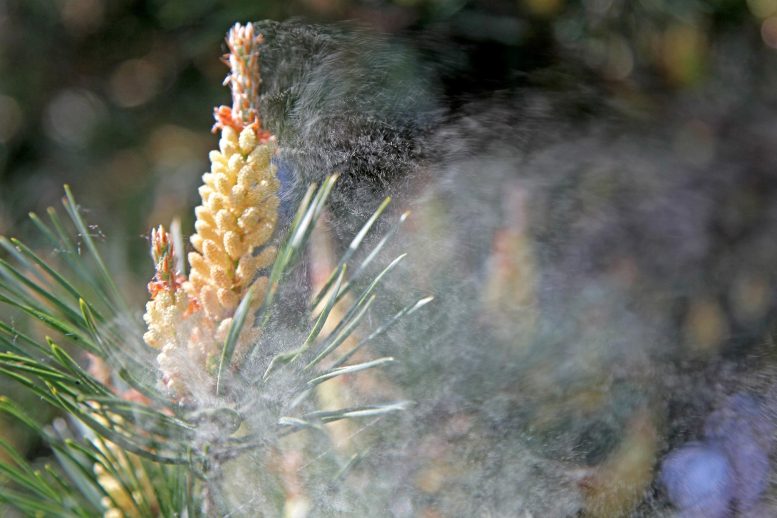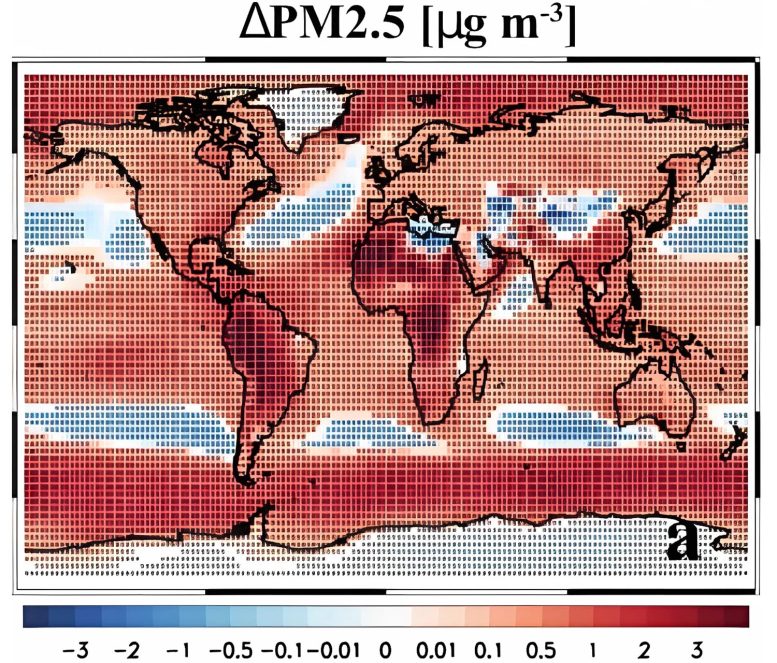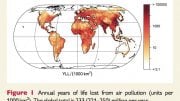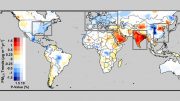
Air pollution from natural sources is expected to increase alongside an increase in average global temperatures.
Hotter temps = more air pollution from natural sources.
Not all pollution comes from people. When global temperatures increase by 4 degrees Celsius, harmful plant emissions and dust will also increase by as much as 14 percent, according to new research at the University of California, Riverside (UCR).
The research does not account for a simultaneous increase in human-made sources of air pollution, which has already been predicted by other studies.
“We are not looking at human emissions of air pollution, because we can change what we emit,” said James Gomez, UCR doctoral student and lead author of the study. “We can switch to electric cars. But that may not change air pollution from plants or dust.”
Details of the degradation in future air quality from these natural sources have now been published in the journal Communications Earth & Environment. About two-thirds of the future pollution is predicted to come from plants.

Air pollution from natural sources, like plants, will increase alongside an increase in average global temperatures.
All plants produce chemicals called biogenic volatile organic compounds, or BVOCs. “The smell of a just-mowed lawn, or the sweetness of a ripe strawberry, those are BVOCs. Plants are constantly emitting them,” Gomez said.
On their own, BVOCs are benign. However, once they react with oxygen, they produce organic aerosols. As they’re inhaled, these aerosols can cause infant mortality and childhood asthma, as well as heart disease and lung cancer in adults.
There are two reasons plants increase BVOC production: increases in atmospheric carbon dioxide and increases in temperatures. Both of these factors are projected to continue increasing.
To be clear, growing plants is a net positive for the environment. They reduce the amount of carbon dioxide in the atmosphere, which helps control global warming. BVOCs from small gardens will not harm people.

Research shows dust will be a major contributor to poor air quality as the climate changes.
“Your lawn, for example, won’t produce enough BVOCs to make you sick,” Gomez explained. “It’s the large-scale increase in carbon dioxide that contributes to the biosphere increasing BVOCs, and then organic aerosols.”
The second-largest contributor to future air pollution is likely to be dust from the Saharan desert. “In our models, an increase in winds is projected to loft more dust into the atmosphere,” said Robert Allen, associate professor of Earth and Planetary Sciences at UCR and co-author of the study.
As the climate warms, increased Saharan dust is likely to get blown around the globe, with higher levels of dust in Africa, the eastern U.S., and the Caribbean. Dust over Northern Africa, including the Sahel and the Sahara, is likely to increase due to more intense West African monsoons.

Change in PM2.5 surface concentration after 4 degrees C of warming. Black dots symbolize statistically significant changes. Credit: James Gomez/UCR
Both organic aerosols and dust, as well as sea salt, black carbon, and sulfate, fall into a category of airborne pollutants known as PM2.5, because they have a diameter of 2.5 micrometers or less. The increase in naturally sourced PM2.5 pollution increased, in this study, in direct proportion to CO2 levels.
“The more we increase CO2, the more PM2.5 we see being put into the atmosphere, and the inverse is also true. The more we reduce, the better the air quality gets,” Gomez said.
For example, if the climate warms only 2 degrees Celsius, the study found only a 7% increase in PM2.5. All of these results only apply to changes found in air quality over land, as the study is focused on human health impacts.
The researchers hope the potential to improve air quality will inspire swift and decisive action to decrease CO2 emissions. Without it, temperatures may increase 4 degrees C by the end of this century, though it’s possible for the increase to happen sooner.
Gomez warns that CO2 emissions will have to decrease sharply to have a positive effect on future air quality.
“The results of this experiment may even be a bit conservative because we did not include climate-dependent changes in wildfire emissions as a factor,” Gomez said. “In the future, make sure you get an air purifier.”
Reference: “The projected future degradation in air quality is caused by more abundant natural aerosols in a warmer world” by James Gomez, Robert J. Allen, Steven T. Turnock, Larry W. Horowitz, Kostas Tsigaridis, Susanne E. Bauer, Dirk Olivié, Erik S. Thomson and Paul Ginoux, 2 February 2023, Communications Earth & Environment.
DOI: 10.1038/s43247-023-00688-7









Actually, breathing would improve if the temperatures rose +4C. “Cold Induced Asthma” is a common disease we would be curing, but we’re not. The bit about electric cars was especially amusing, as if burning coal to power them will reduce airborne particulate.
What I find interesting — and disconcerting — is that there is almost never a concern about the net changes. That is, the focus is on the negative aspects of change, as though there is never anything positive resulting from warming. I’m sure the ‘Snowbirds’ that head south every Winter think that there are positive outcomes from warmth.
Do BVOCs increase in proportion to the Celsius or Kelvin temperature? That is, is the freezing point important? Is the increase linear or exponential or does it follow some other function?
Where are the quantitative relationships between CO2 and temperature and the BVOCs? Or, is this hand waving based on “the models tell us this.” I suspect the latter, considering that the published article says, “The overall response of dust aerosol to climate change, however, remains uncertain. Observations from the Terra and Aqua satellites from 2001-2018 over northern Africa, …, have shown an uncertain response in dust aerosol optical depth (Terra shows a decrease, Aqua an increase), …”
Why were geopolitical regions used to show delta PM2.5, instead of the Köppen–Geiger climate regions, which account for temperature and precipitation. Do the claimed future relationships to BVOCs and temperature exist today in the various Köppen–Geiger climate regions?
This seems like another poorly supported scary story about CO2.
“The U.S. also experiences large relative increases in PM2.5 at 26.6 ± 13.7%.”
Would you accept a job offer if the stated salary was ± 13.7% of a nominal base salary?